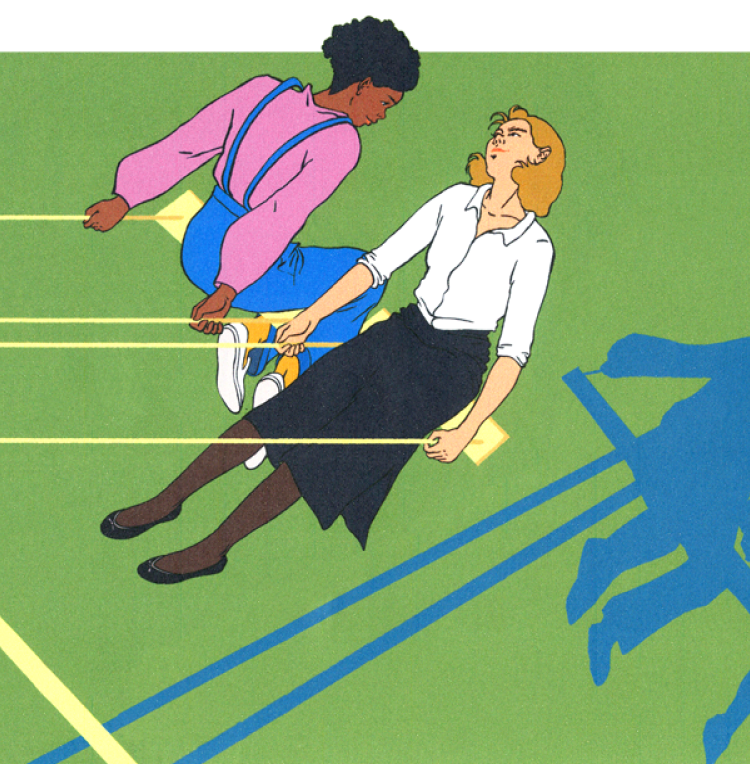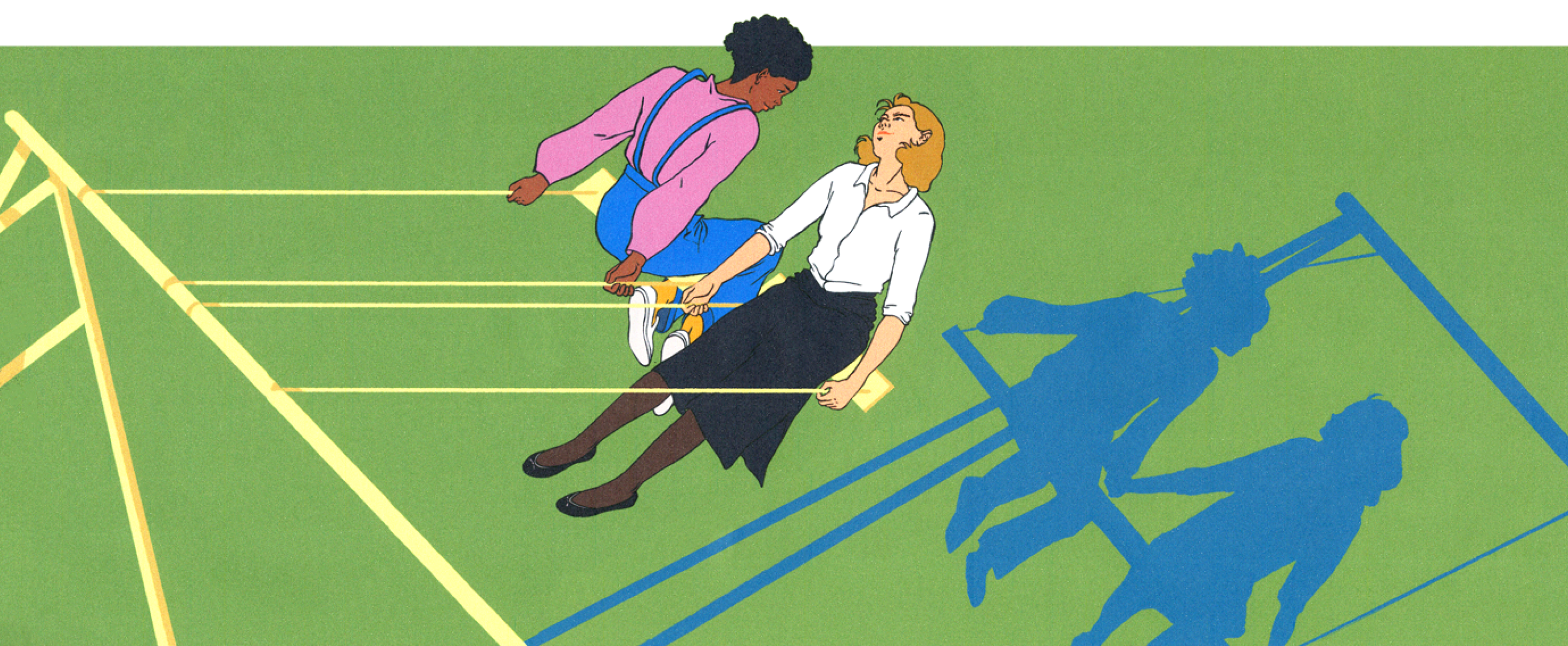02 Champion Originality
Now it’s time for a little controversy. Of all the topics we researched while creating Tyrus, nothing fanned the flames of debate quite like the age old question: Do you always stay true to your personal illustration style, or do you adapt according to each client’s (and your business’) needs?
Some felt it was important to remain faithful to their style no matter what, while others pointed out that not everyone has the luxury of prioritizing personal preference over professional obligation. We believe strongly that both sides of this conversation deserve to be heard, which is why we’ve focused the second section of Tyrus on the tips, tricks, and tools illustrators need to advocate for their work while also keeping a business afloat.
As a team committed to celebrating style and diversity across the globe, we know firsthand that creative communities are stronger when individuals are empowered to make work that reflects their strengths. We hope that many of you can start your journey here.
- Showcase—and stand up for—what you do best
- Practice navigating requests to copy others (and avoid the temptation to emulate popular trends yourself)
- Create work that’ll attract the clients you want
- Gain insights from the larger industry and Airbnb Design
62% of illustrators feel comfortable having conversations about the merits of custom illustration vs stock illustration with clients.
5 Ways to Champion Your Style Warm Up
As an illustrator, your personal style is your calling card; It's what sets you apart from others. But what happens when you’re asked to change your style to match someone else’s, or when your aesthetic is different from what’s popular on Instagram? As passionate creatives who also need to make a living, most illustrators know this dilemma well—and while there are times when negotiation isn’t an option, there are ways to advocate for your style and continue making work you love.
The second section of Tyrus will show you how to do just that. We’re excited to share tips and tricks for navigating sensitive conversations with clients and celebrating what makes your work stand out. (Read more about each point in this section’s Deep Dive!)
5 Ways to Advocate for Your Style
01 Perfect your portfolio.
A strong, up-to-date portfolio is the best tool you have to show potential clients what you can do. At Airbnb, we’re much more likely to reach out to a candidate with a well-organized portfolio that showcases their work in a clear way. (Use our portfolio checklist to get yours in top shape.)
02 Be bold, but realistic.
Going for a job that calls for a style significantly different from your own? Sometimes the challenge is fun and exciting. Other times, it can be daunting if you’re unsure whether you’re the right person for the job. When that happens, be honest with yourself about the ways in which you are able to be flexible. Of course, it’s often not an option to turn down a paying gig—if that’s the case, take experiences like these as opportunities to set goals and to think about how you’d like your work to grow.
03 Encourage clients to dream big.
If a client asks you to emulate another illustrator’s style, help widen their vision. Follow up with a conversation about what makes their brand unique and how your work can help enhance those points (and set them apart from their competition!).
04 Get re-inspired.
In some cases, you may find that you're the one who’s emulating others. If your illustrations are starting to feel less like you and more like someone else, take a step back and re-evaluate where you’ve been seeking inspiration. Look beyond social media or the Internet and seek fresh ideas in unexpected places—you may be surprised how much can come from looking at the design of a vase, the colors in an old movie, or the lettering on a map.
05 Create work you want to be hired for.
If your signature style looks nothing like whatever’s popular at the moment, you may feel you have no choice but to adjust your aesthetic to stay in the game. Rather than change what makes your work unique, however, consider taking a backwards approach to getting the jobs you want. Do research on potential clients that fit your style, and create the kind of art that you feel speaks to their needs. That way, you can reach out with confidence—and with work that feels 100% like you. (Use email template #4 when that time comes!)
Takeaway
Stand up for your style. Ultimately, your unique background and perspective are what make your work special. At Airbnb we’re always excited to see work that conceptually pushes boundaries and look to artists who are inspired by a broad range of influences. Resist the urge to adjust your approach to fit popular trends—your work will always be its strongest when it most accurately reflects you.
Be Your Own Best Advocate Deep Dive
We don’t need to tell you that an illustrator’s personal style is, well, intensely personal. It’s built from years of practice and experimentation, and informed by their unique background and interests. That’s why it can be frustrating when clients ask you to adapt your aesthetic to suit the needs of a project—or worse, copy others while you’re at it.
In this Deep Dive, we’ll explore a hypothetical client scenario, and break down how each Warm Up tip can help you navigate style-related hiccups. Our goal? To help you confidently showcase your strongest work, address tricky conversations, and approach your dream clients with material that reflects your style and their needs. Let’s get started!
The Scenario
Inspired by work seen in a popular European fashion magazine, a boutique clothing company known for its bold use of color and pattern is requesting illustrations of models wearing their clothing, and a series of pattern explorations for a future collection.
The Solution
Step 1: Perfect your portfolio.
In many cases, you won’t have an opportunity to explain your work or creative process when you’re up for a project. Instead, your portfolio does that for you. An organized, up-to-date, and easily navigable website goes a long way in making a strong (and accurate) first impression.

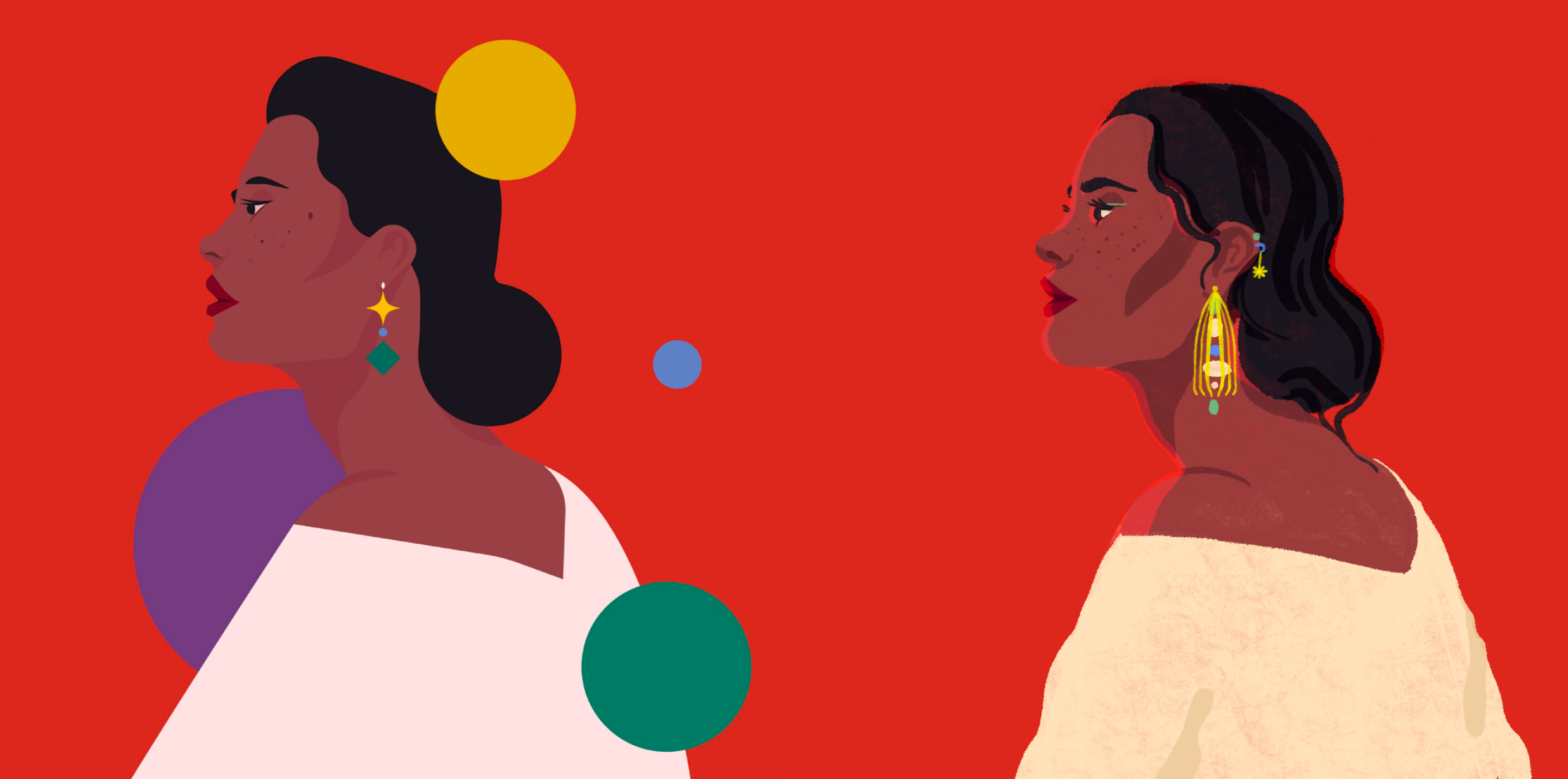
How this could go wrong
Let’s say that a hypothetical fashion client had consulted your portfolio before reaching out, and pulled an example of your work that they thought perfectly fit their vision for their project. The problem is, the work they’re referring to was completed years ago, and is no longer representative of your current style.
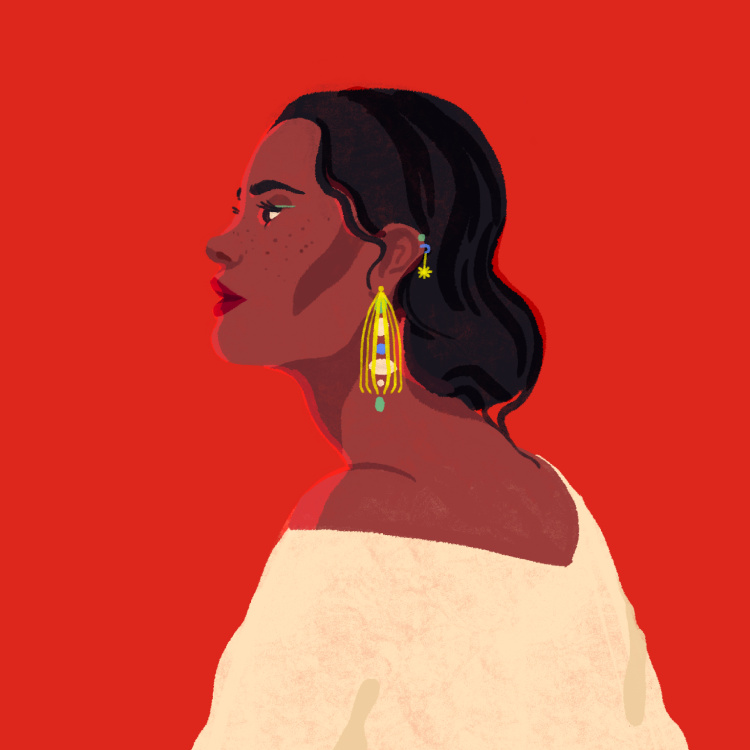
How to get it right
Start by updating your portfolio with our portfolio checklist. Be sure it only shows work you want to be hired for, and you’ll lessen the chances of a client asking you to create in a style that no longer works for you.
If it’s too late for that, have a conversation about ways to align your client’s needs with your current aesthetic. Ask them to tell you what they liked about your older work. The more you can learn about what they’re drawn to, the easier it will be to find a potential compromise.
Step 2: Be bold, but realistic.
Clients often seem to be under the impression that all illustrators can illustrate everything. While that confidence is encouraging, it’s not that practical. At Airbnb, our goal is to understand how much our illustrators are able to flex their skills. Can someone who specializes in environments also draw humans? Will a folksy illustrator who normally uses earth tones agree to adjust to fit a more modern palette? In every case, the answer is dependent on what each individual is willing and able to do.


How this could go wrong
As you learn more about your potential fashion gig, you find out that the illustrations the client mentioned need to depict their clothing being modeled. While you’re well-versed in pattern work, your experience depicting humans is limited. Now you’re unsure what to do: Accept the challenge and risk creating subpar work? Or say no and lose out on the money and experience?

How to get it right
First, be honest with yourself. Ask yourself:
What am I risking by taking this job? Do I feel confident that I can do my best work in this situation?
Our team has had illustrators say yes to everything we ask of them, only to realize that the work we’ve requested is not their strong suit. This can damage a professional relationship in the long run, and cause your client to look elsewhere the next time they’re in need of illustration help. Remember that there’s no shame in admitting that a project isn’t right for you—no one can be expected to execute every style.
Next, be honest with your client. If you do accept the job, assess whether you’ll need additional time to ensure you’re able to create the high-quality work they’re looking for. If you feel you’ll need to learn a new skill in order to complete the work, consider asking for a higher fee.
Step 3: Encourage clients to dream big.
A client will often have visual ideas in mind before a project gets started. Sometimes, those ideas look suspiciously like those of other illustrators. Usually, this happens because a client simply hasn’t considered what their other options are; instead, their vision is focused solely on what’s popular in their industry. What’s the best way to navigate a paying client’s request to imitate someone else’s work?

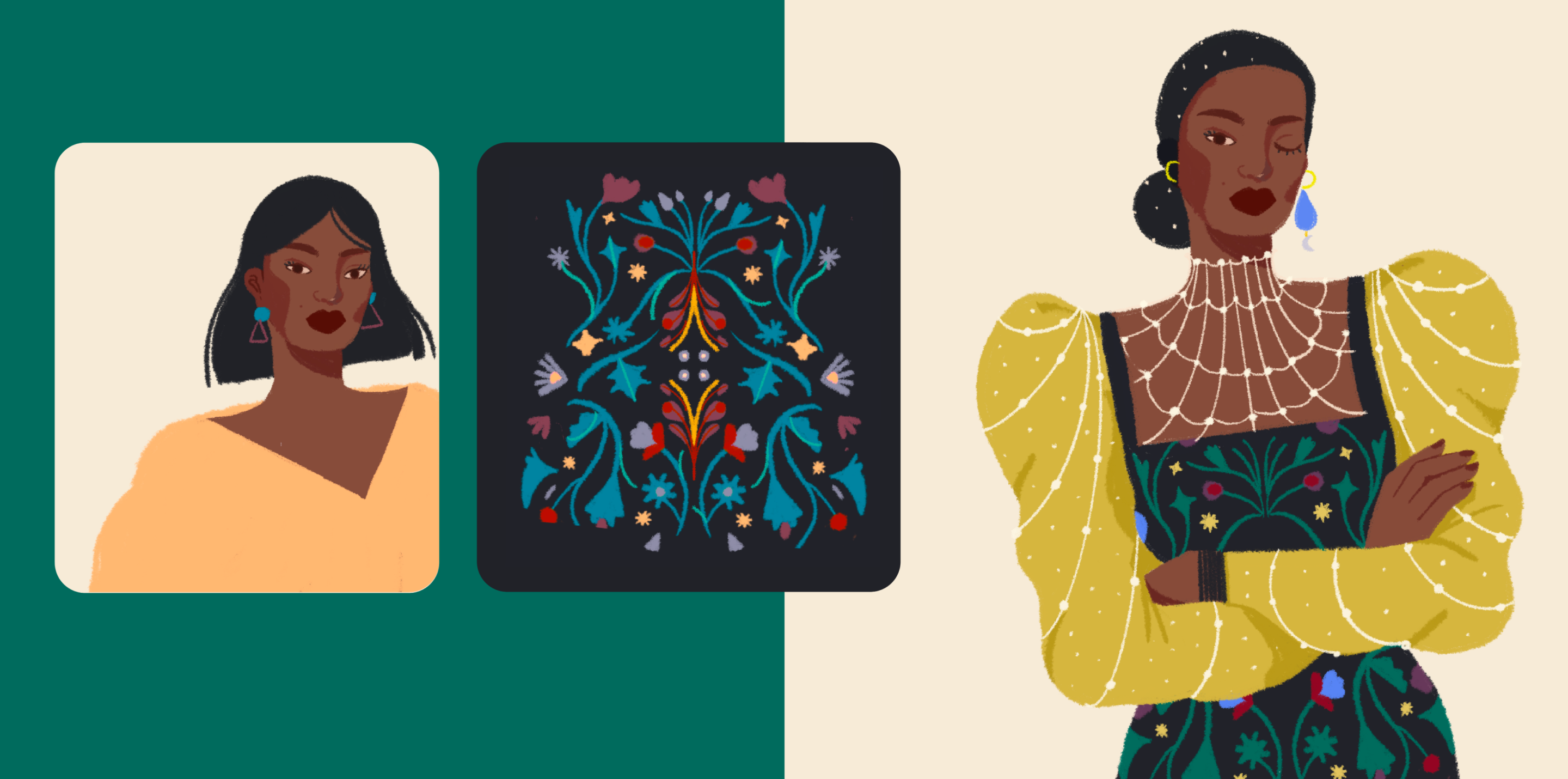
How this could go wrong
In an early ideation meeting, your fashion client presents you with two examples of illustrations they love: One is pattern-focused and the other is a portrait. Both were created by illustrators you know to be well-respected and who are most likely quite expensive to hire. Your client tells you they’d like you to use these illustrations as inspiration, but after several rounds of revisions, it’s clear they’d prefer you copy certain elements of them completely.
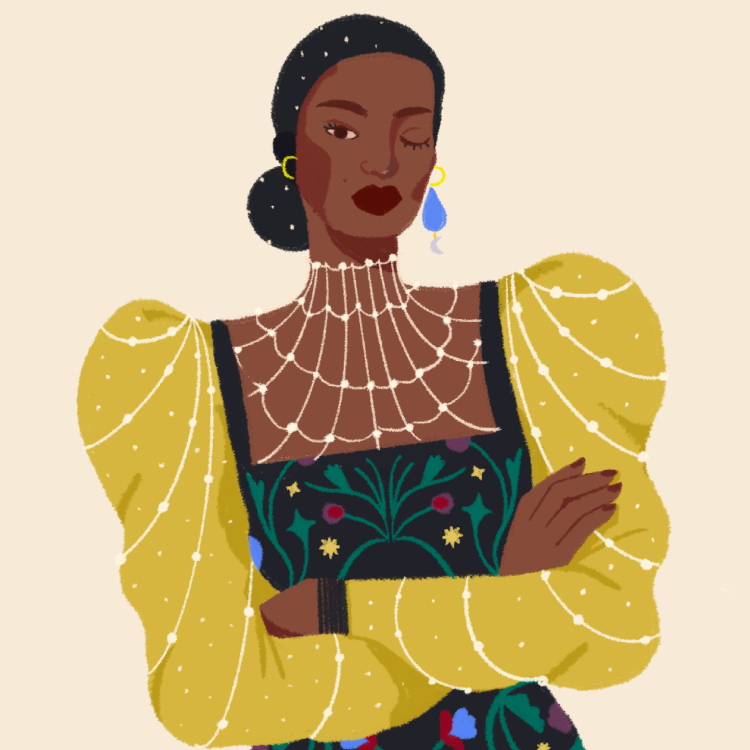
How to get it right
Start by talking about project objectives:
Have a conversation with your client about their broader goals. What will truly help distinguish this client from their competitors? Chances are, it won’t be a carbon copy of work that’s already been created.
Ask them what they like most about the other illustrators’ work:
If your client continues to get hung up on the same references, ask them to get specific about what they’re most attracted to in those pieces. When you have a better grasp of what it is they’re after, you’ll have a more solid chance of successfully interpreting those desires in your own way.
Sometimes you’ll reach the end of these discussions and feel great about moving forward with your client. Other times, you’ll have to ask yourself whether a project is really the right fit for you. It can feel tempting to take any job that lands in our laps (and in many cases, we financially have to), but being asked to copy another artist can prevent you from creating work that you'd ultimately be proud to add to your portfolio.
Step 4: Get re-inspired.
Often, it’s not just our clients who are asking us to copy others. Sometimes we as illustrators straddle the ever-present line of seeking inspiration from someone else’s work versus straight-up stealing. It’s never been easier to access a wealth of inspiration at any time—but ultimately, the more intentional we can be about where we’re sourcing our ideas, the stronger and more distinct our work will become.
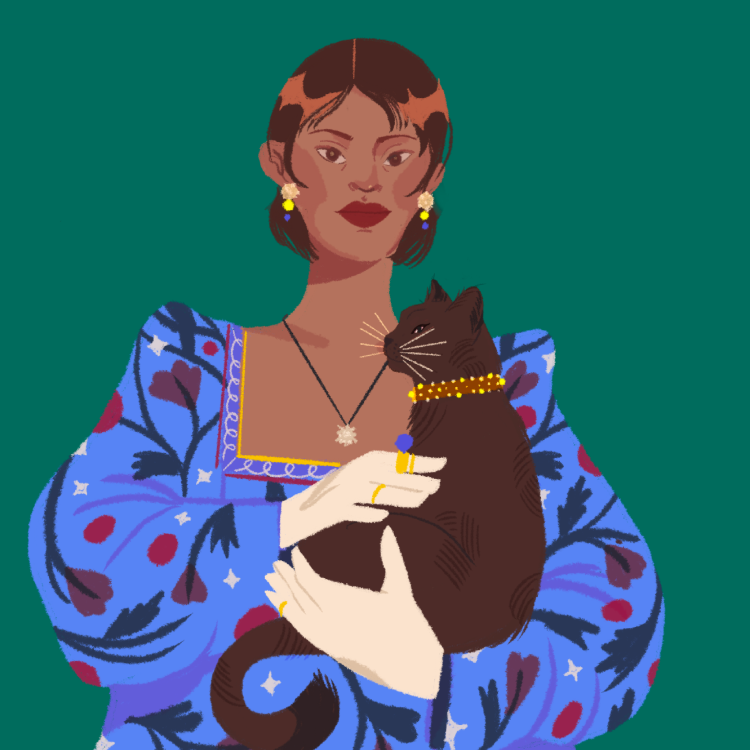
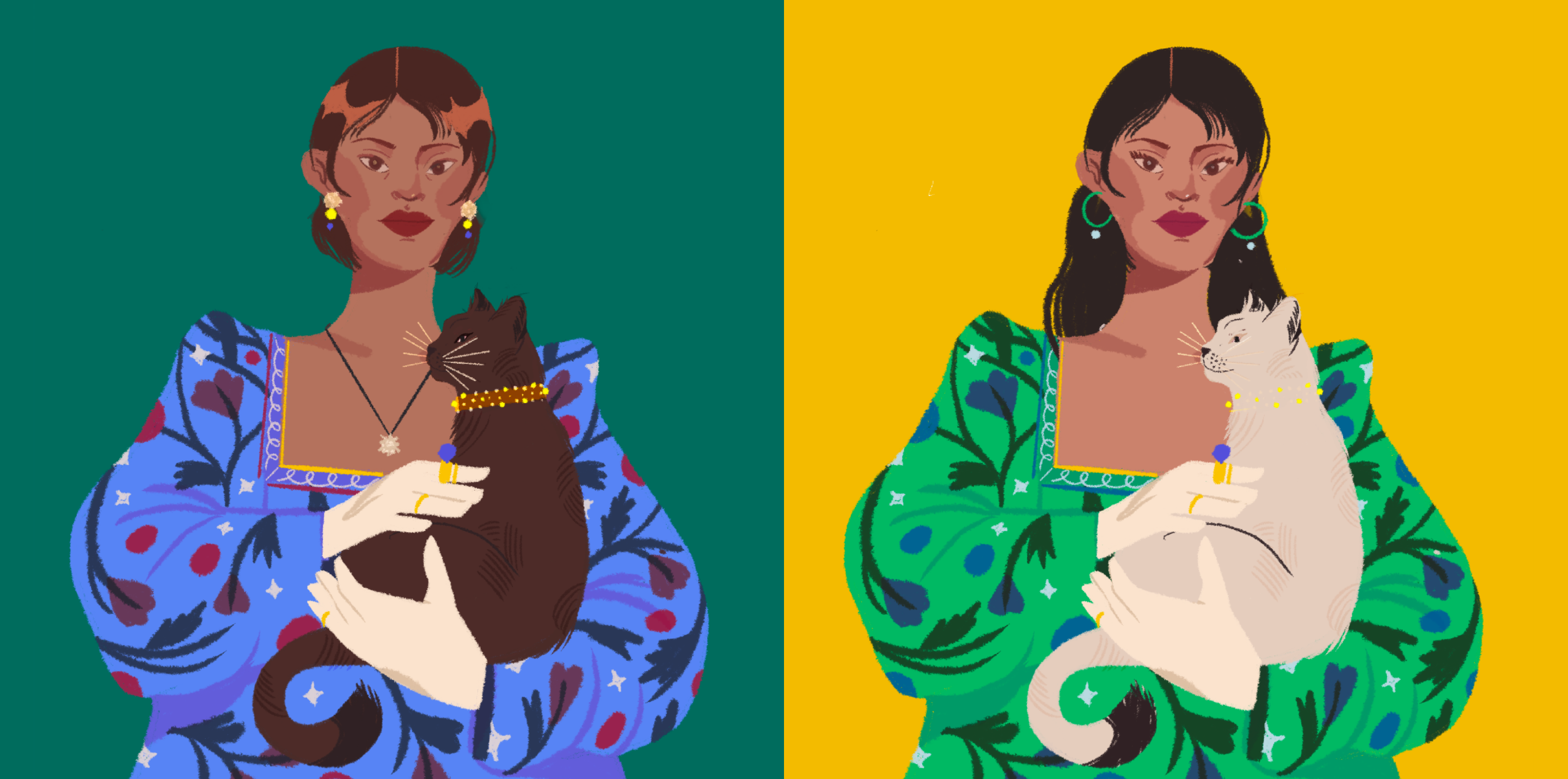
How this could go wrong
You begin work for your pattern project by researching illustrators who are popular in the fashion world. You make notes about what colors and compositions seem to resonate most powerfully with audiences in that field, but when you finally sit down to start a sketch, you can’t get those images out of your head. The resulting draft ends up looking like a watered-down imitation.
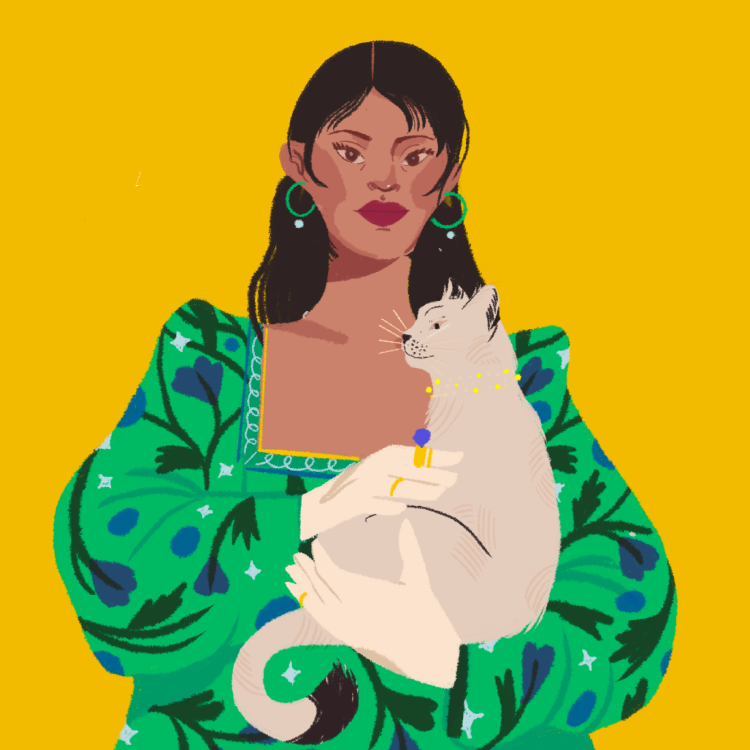
How to get it right
Know your history.
While social media can be great (and constant!) sources of inspiration, they’re often reaffirming trends we’re already seeing all the time. Though this can be inspiring in its own way, it can sometimes lead to unintentional copying. Consider looking to the dead rather than the living for inspiration instead. All of your modern favorites have historical influences they’re referencing in their work—trace that lineage back as far as you can go. Ask yourself, what are the techniques and distinctions that made that earliest material most compelling, and how could it be reinterpreted today?
Step 5: Create work you want to be hired for.
Sometimes, it can feel like the work we love doing isn’t getting us the exposure we need to sustain ourselves. Coming to terms with the reality that our style isn’t as commercially acceptable as others can be troubling. But being more strategic about what you’re illustrating can help alleviate the anxiety of inconsistent work.
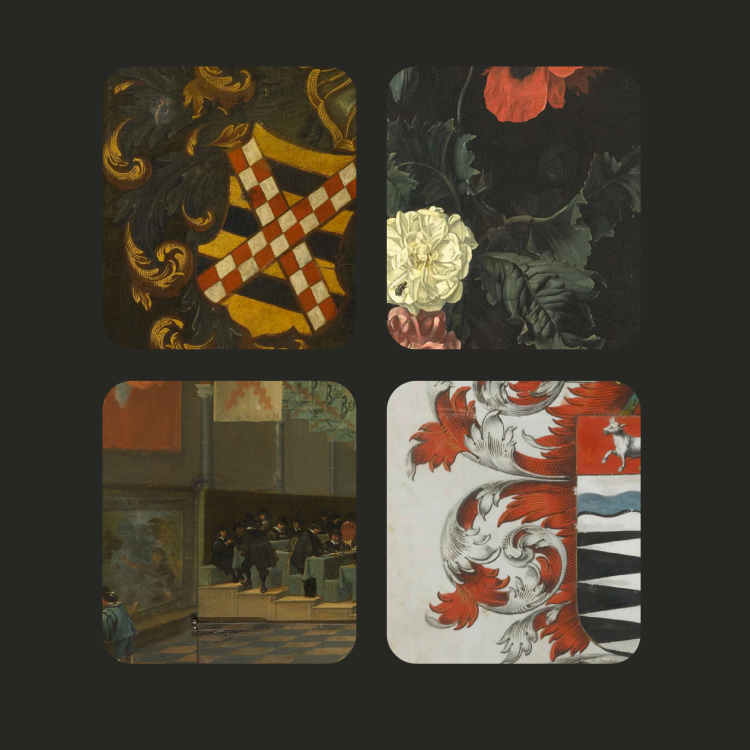
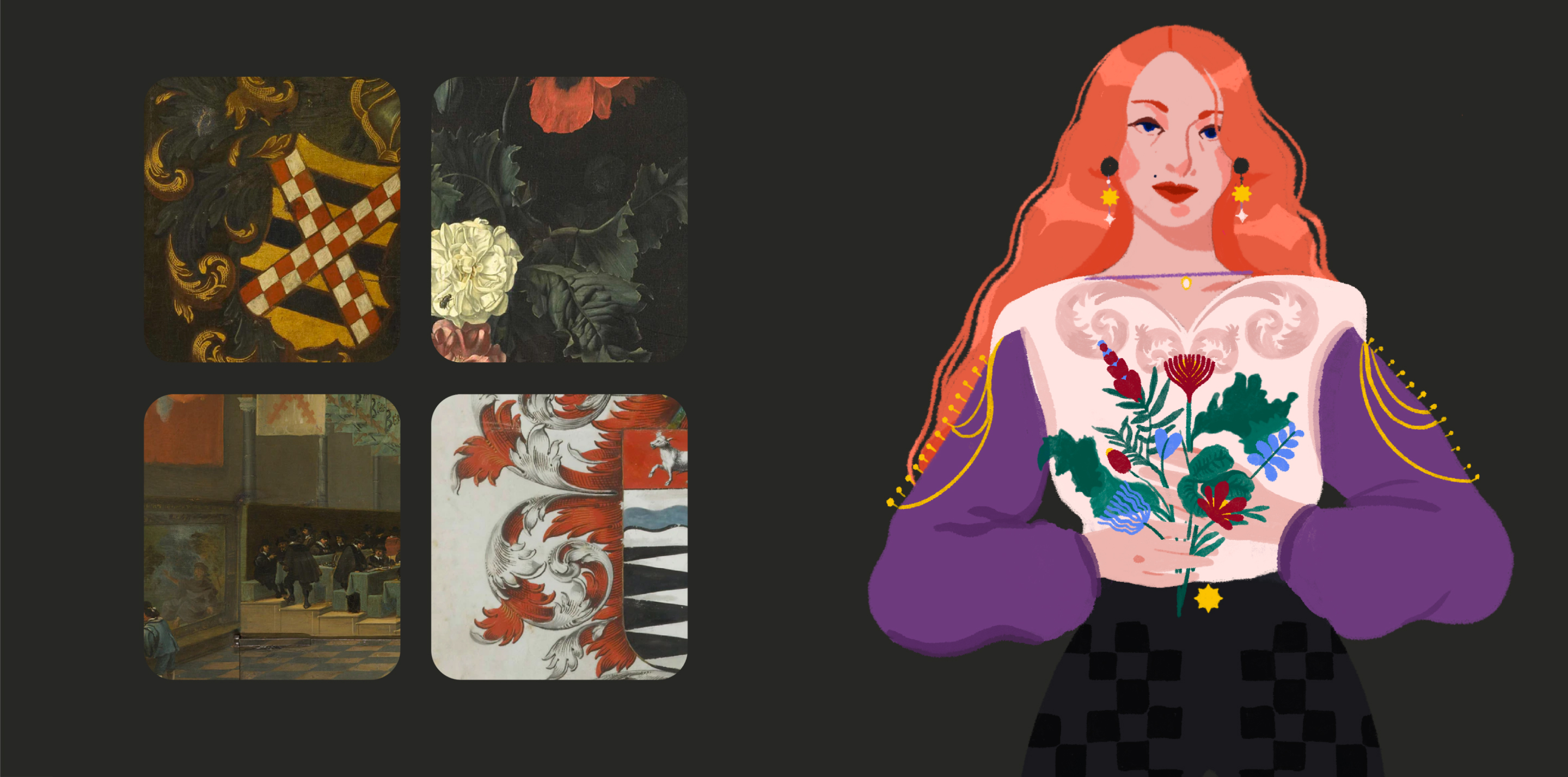
How this could go wrong
You’re feeling frustrated that you can’t seem to find paying work that is also creatively fulfilling. One reaction to that frustration is to assume that this type of work simply doesn’t exist—but this way of thinking will only throw you into an unhappy cycle of accepting jobs that don’t excite you or add value to your portfolio.
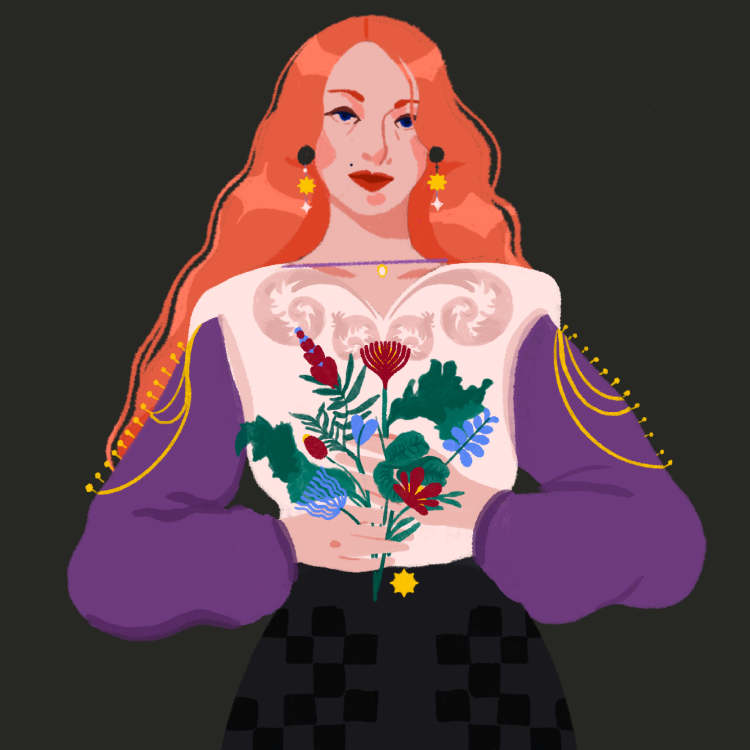
How to get it right
Create illustrations that will allow you to reach out to the clients you want to work with. Thoroughly research brands and agencies whose work you respond to, and challenge yourself to come up with illustrations that might actually meet their needs—then, get in touch!
Don’t reach out to just anyone. We often have a full range of illustrators emailing our team about potential collaborations. While we love seeing a wide array of work, many of their portfolios don’t match what our company really needs. Save time and energy by being thoughtful about whether your style is really a fit for the brand you’re pitching.
Conclusion
Standing up for your style, determining whether you’re the right fit for a project, and pursuing work that truly suits your aesthetic are challenges that every illustrator can relate to. If you’ve taken a job with a client who’s asking you to copy another artist or conform to a trend, do your best to explain that your unique perspective will help their brand stand out. If they refuse to budge, don’t be discouraged. Everything is a learning experience. Use this one to develop a clearer picture of the types of jobs you’d be excited to take—and refer back to step #5 to make it happen!
